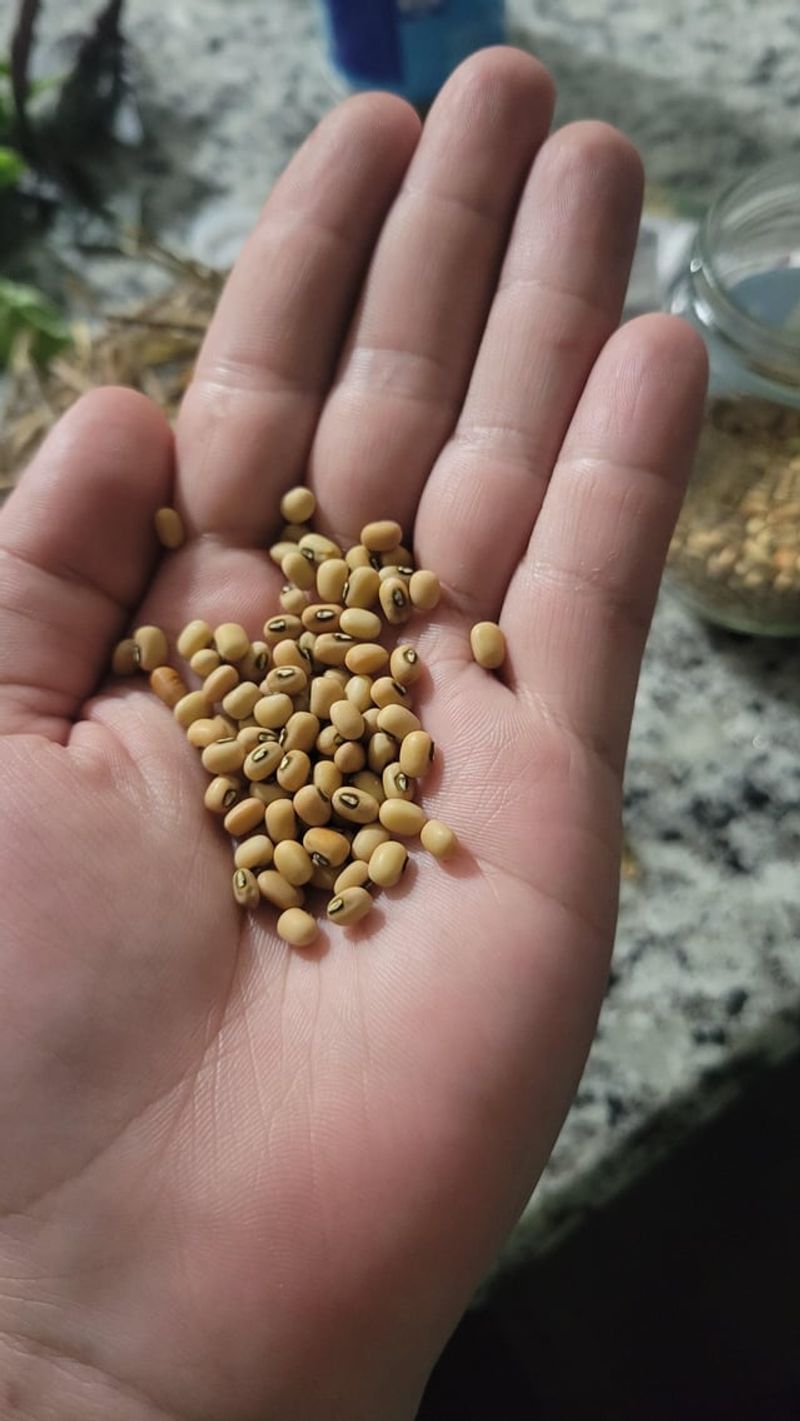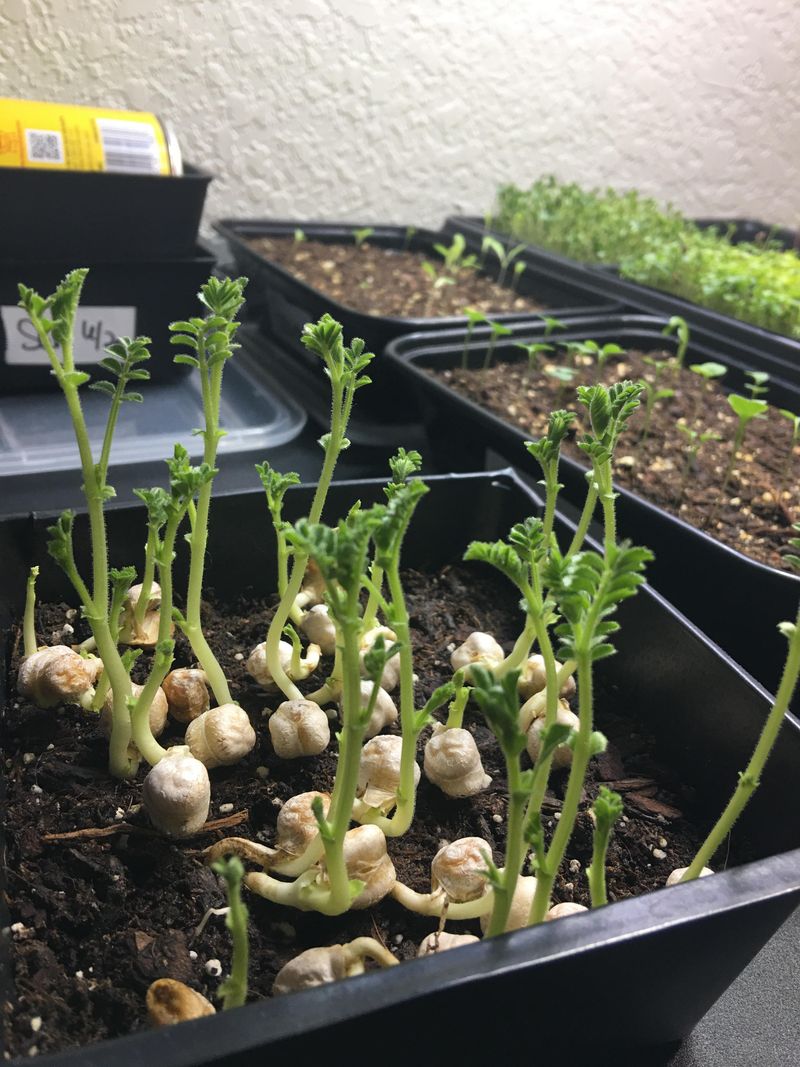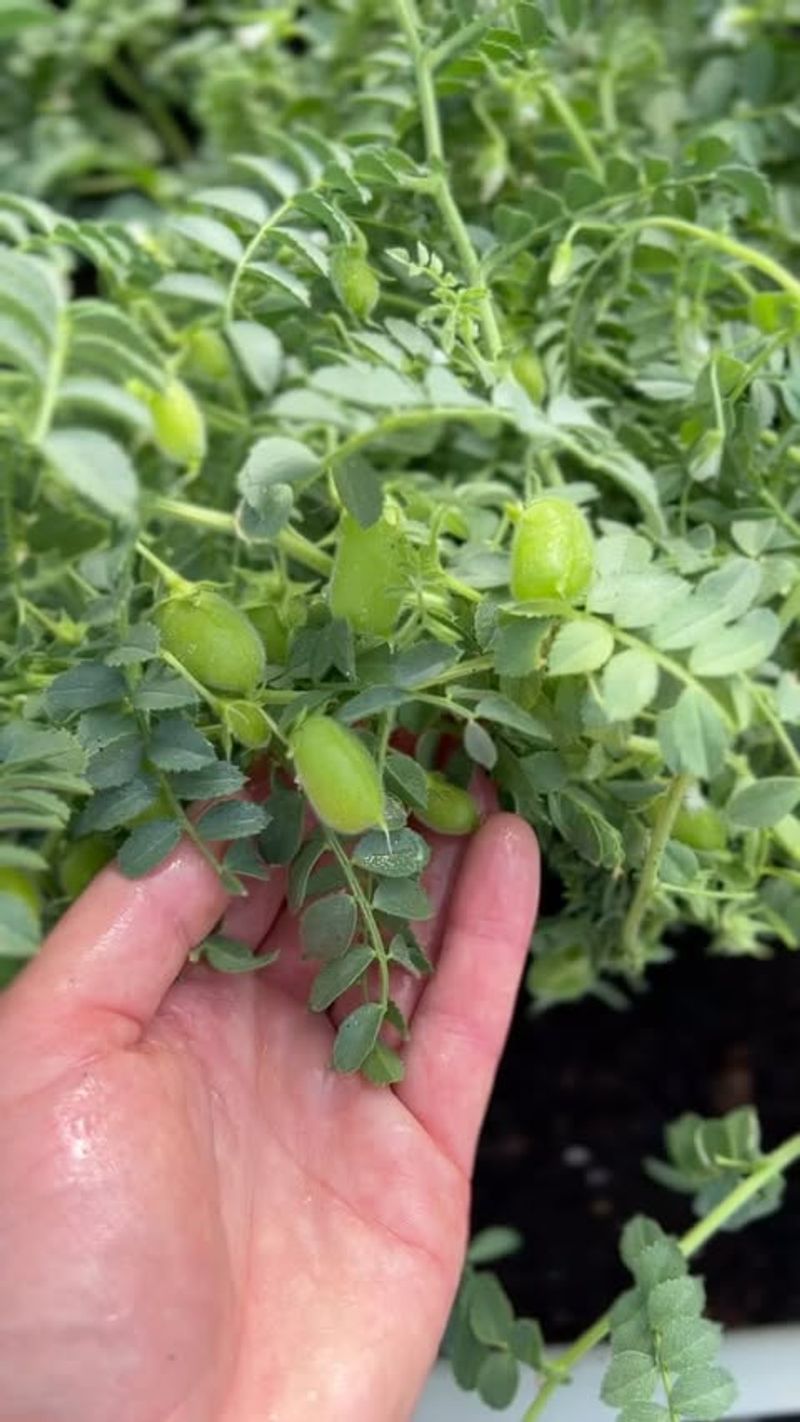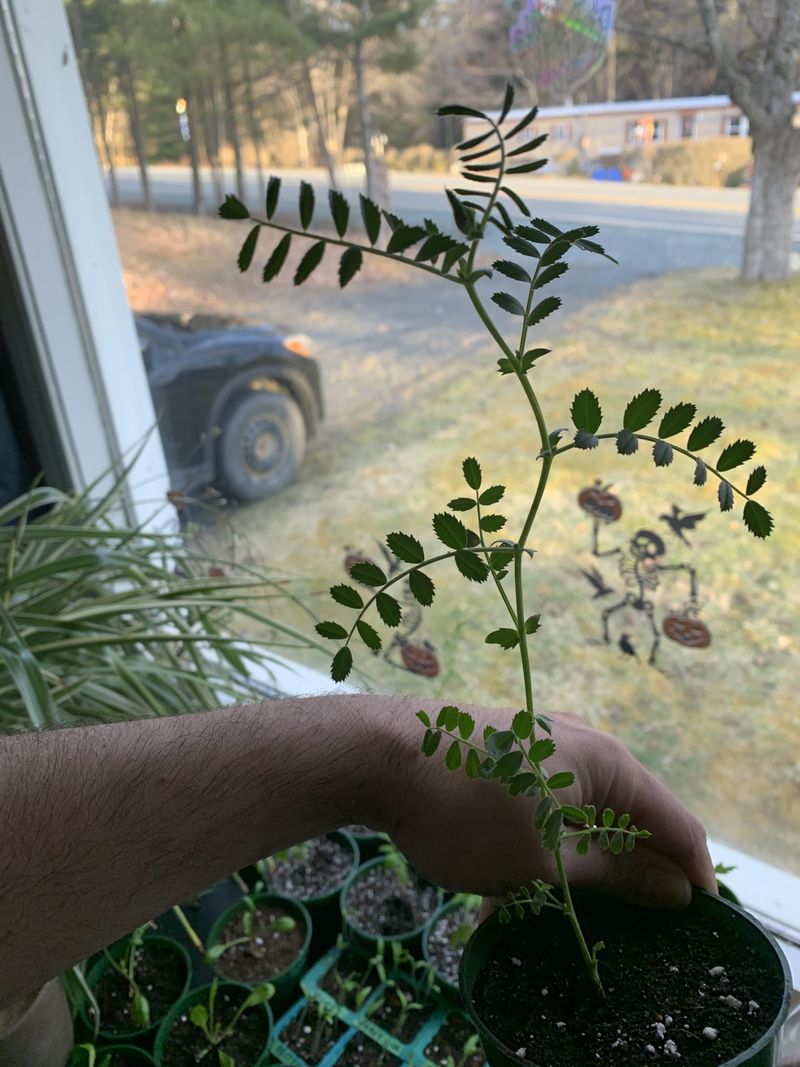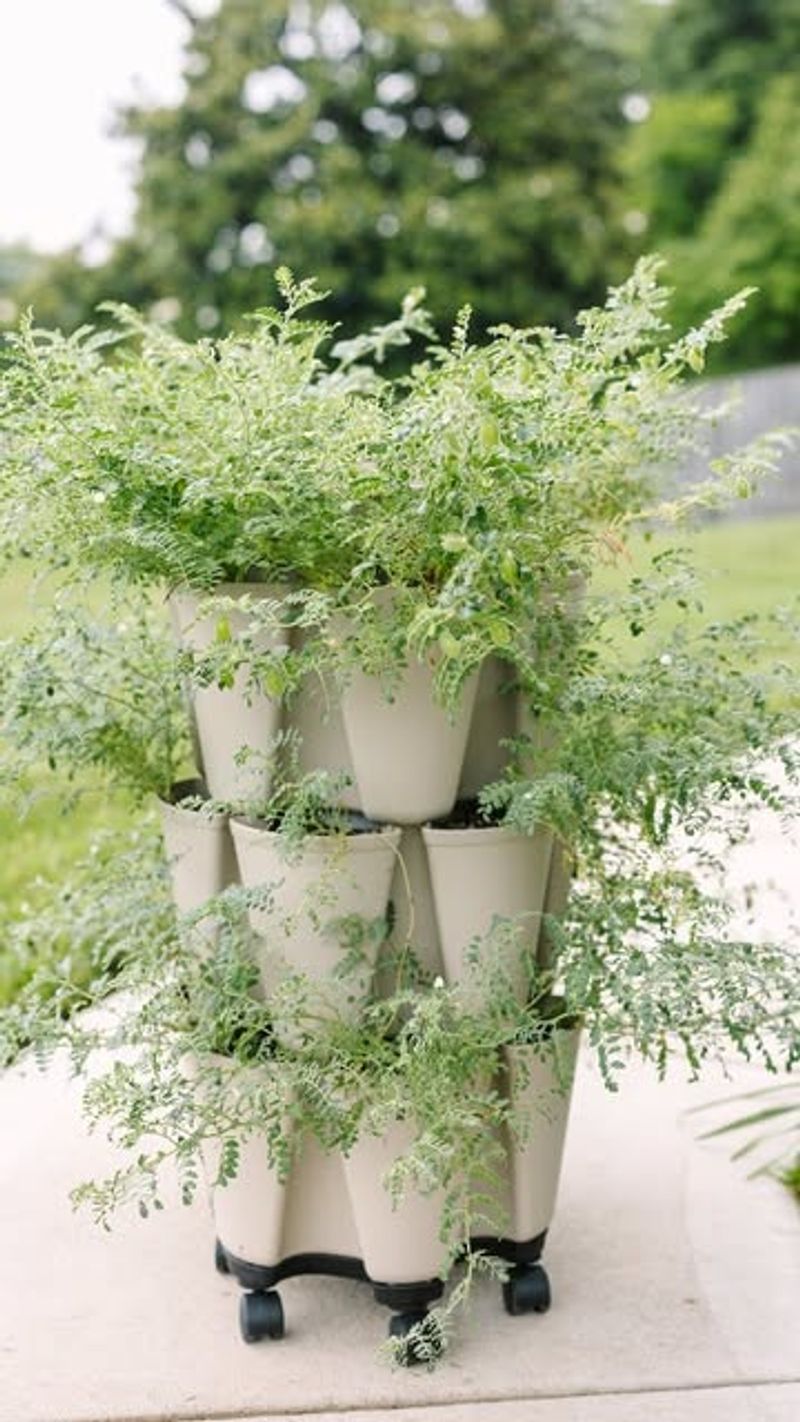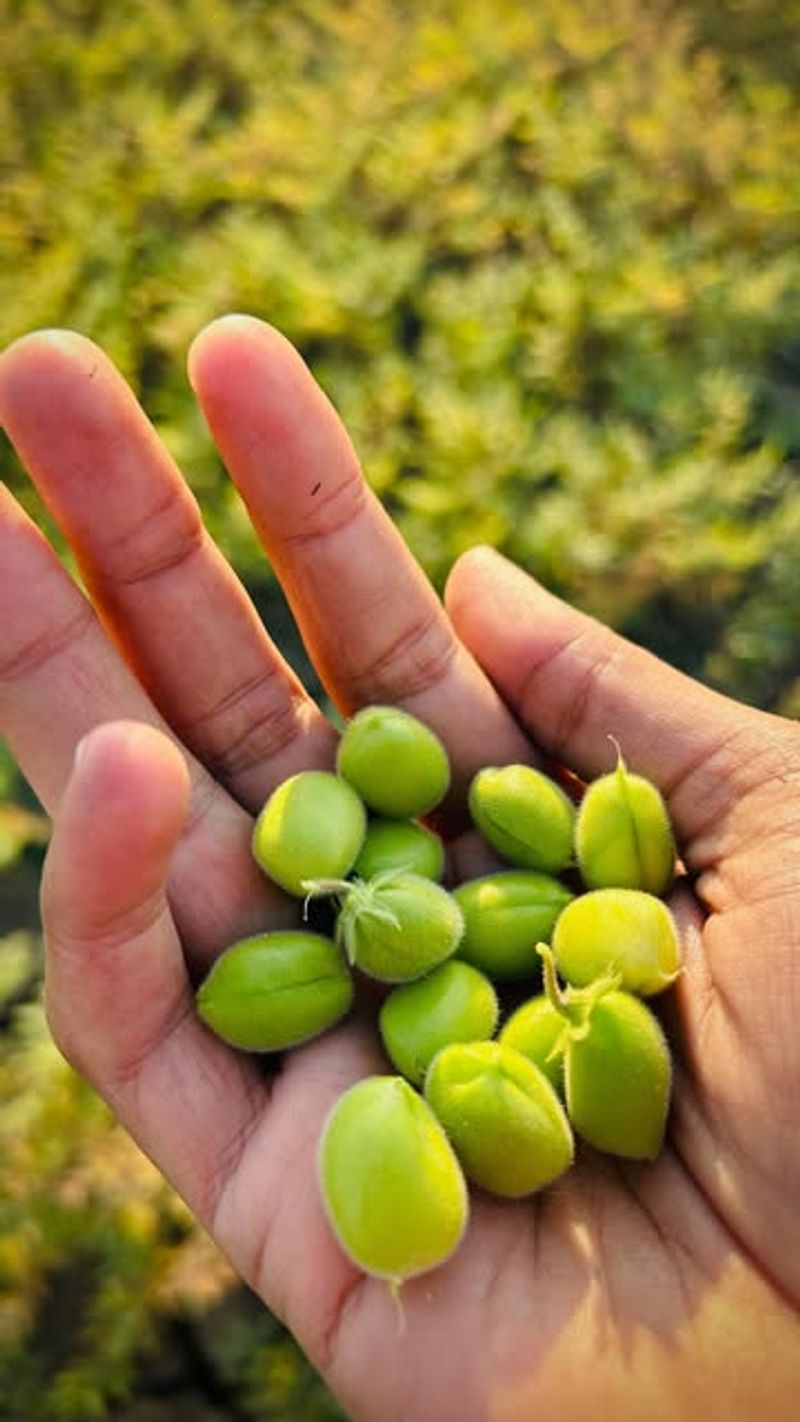Growing chickpeas indoors started as a little experiment during one long Michigan winter, and it turned into a fun routine. They’re surprisingly charming plants once you get the hang of them.
I love the way they brighten up a windowsill when everything outside looks frozen solid. Here’s what helped me keep them thriving month after month.
1. Pick the Right Chickpea Variety
Selecting a suitable chickpea variety makes all the difference when you’re gardening indoors in Michigan. Desi chickpeas tend to be hardier and more compact than kabuli types, making them ideal for container growing.
Look for quick-maturing varieties that can handle lower light conditions. Compact plants won’t take over your indoor space and will produce beans faster, which is perfect when you’re working with limited winter sunlight and want to harvest before spring arrives outside.
2. Choose Deep Containers with Good Drainage
Chickpeas develop long taproots that need plenty of room to stretch downward. Containers should be at least 10 to 12 inches deep to accommodate healthy root growth and prevent cramped, stunted plants.
Drainage holes are absolutely essential because chickpeas hate sitting in waterlogged soil. In Michigan winters, indoor air can be dry, but overwatering is still a common mistake. Use pots with saucers underneath to catch excess water and protect your floors while keeping roots happy and healthy.
3. Use Well-Draining Potting Mix
Regular garden soil is too heavy for indoor chickpea containers and can suffocate roots. Instead, grab a high-quality potting mix that drains well and contains ingredients like perlite, vermiculite, or coconut coir.
Adding a bit of compost enriches the soil with nutrients chickpeas love. Michigan’s indoor heating systems can dry out soil quickly, so a mix that retains some moisture while draining excess water strikes the perfect balance for healthy plant growth throughout the long winter months.
4. Provide Plenty of Bright Light
Chickpeas are sun-loving plants that crave at least six to eight hours of bright light daily. Michigan winters offer limited natural sunlight, so placing containers near south-facing windows helps maximize exposure.
If natural light isn’t enough, invest in full-spectrum LED grow lights positioned about 6 to 12 inches above your plants. Supplemental lighting ensures strong stems, lush foliage, and better bean production even when gray skies dominate outside your Michigan home during those long, cold months.
5. Maintain Consistent Indoor Temperatures
Chickpeas prefer temperatures between 65 and 75 degrees Fahrenheit during the day. Michigan homes often stay within this range during winter thanks to heating systems, but avoid placing plants near cold drafts from windows or doors.
Nighttime temperatures can drop slightly without harming your plants, but keep them above 50 degrees. Sudden temperature swings stress chickpeas and slow their growth, so find a stable spot away from vents, radiators, or chilly corners to keep your indoor garden thriving consistently.
6. Water Carefully and Consistently
Overwatering is one of the biggest mistakes indoor gardeners make with chickpeas. Water only when the top inch or two of soil feels dry to the touch, and always water at the base of the plant rather than overhead.
Michigan’s dry indoor winter air might make you think plants need more water, but chickpeas prefer slightly drier conditions. Consistent watering schedules help roots stay healthy without becoming waterlogged, which can lead to root rot and other problems that weaken your plants over time.
7. Support Plants with Small Stakes
As chickpea plants grow taller, they can become top-heavy and flop over, especially indoors where there’s no natural wind to strengthen stems. Small bamboo stakes or plant supports keep them upright and organized.
Gently tie stems to stakes using soft twine or plant ties, being careful not to damage delicate growth. In Michigan, where space might be limited during winter, staking also helps maximize your growing area by keeping plants neat and compact while encouraging better air circulation around foliage.
8. Watch for Common Indoor Pests
Indoor environments in Michigan can attract pests like aphids, spider mites, or fungus gnats that love the warmth and humidity around your chickpea plants. Regularly inspect leaves, stems, and soil surfaces for signs of trouble.
Catch problems early by wiping leaves with a damp cloth or using insecticidal soap if needed. Good air circulation and avoiding overwatering help prevent pest infestations. Keeping your growing area clean and removing any yellowing leaves also reduces hiding spots where pests might gather and multiply.
9. Harvest at the Right Time
Chickpeas are ready to harvest when pods turn brown and dry, usually 90 to 120 days after planting. You can pick fresh green chickpeas earlier if you prefer a tender, sweet flavor for salads or snacking.
For dried chickpeas, wait until pods rattle when shaken, then remove them from plants and shell the beans. In Michigan, timing your planting in early winter means you could harvest by late winter or early spring, giving you homegrown nutrition just when fresh produce feels scarce outside.


